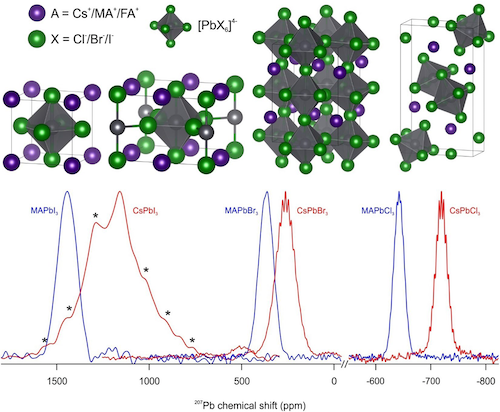Ask for a reprint
email :
* Give your email
2020
ACL
|
Marcel Aebli, Laura Piveteau, Olga Nazarenko, Bogdan M.Benin, Franziska Krieg, René Verel, Maksym V.Kovalenko, 'Lead-Halide Scalar Couplings in 207Pb NMR of APbX3 Perovskites (A = Cs, Methylammonium, Formamidinium; X = Cl, Br, I)', Sci. Rep. 10 8229 (2020) doi:10.1038/s41598-020-65071-4
Understanding the structure and dynamics of newcomer optoelectronic materials - lead halide perovskites APbX3 [A = Cs, methylammonium (CH3NH3+, MA), formamidinium (CH(NH2)2+, FA); X = Cl, Br, I] - has been a major research thrust. In this work, new insights could be gained by using 207Pb solid-state nuclear magnetic resonance (NMR) spectroscopy at variable temperatures between 100 and 300 K. The existence of scalar couplings 1JPb-Cl of ca. 400 Hz and 1JPb-Br of ca. 2.3 kHz could be confirmed for MAPbX3 and CsPbX3. Diverse and fast structure dynamics, including rotations of A-cations, harmonic and anharmonic vibrations of the lead-halide framework and ionic mobility, affect the resolution of the coupling pattern. 207Pb NMR can therefore be used to detect the structural disorder and phase transitions. Furthermore, by comparing bulk and nanocrystalline CsPbBr3 a greater structural disorder of the PbBr6-octahedra had been confirmed in a nanoscale counterpart, not readily captured by diffraction-based techniques.
|

|